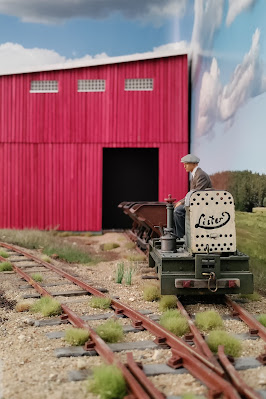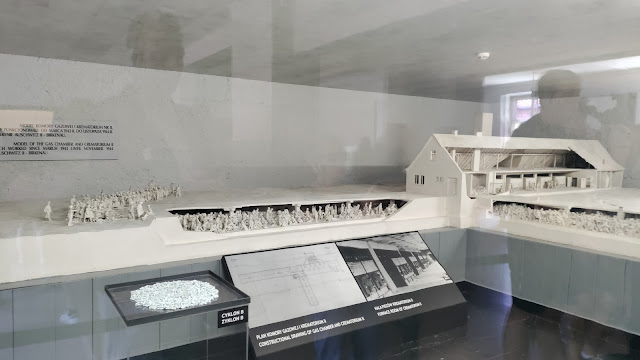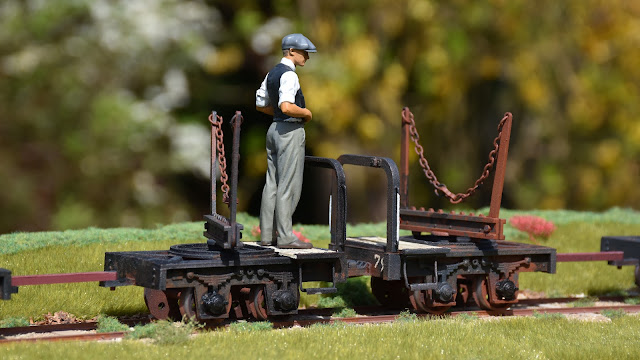Dedicated followers of this blog will probably recognise the checkered table cloth. A sure sign that I'm vacationing in the cottage and holiday modelling. And that's just what I am! For a change I have brought a 1/87 scale kit to assemble to the best of my abilities. The small size is perfect for bringing away from the house, but the tiny parts are quite challenging. Nevertheless I press on and hope to have the kit more or less finished once my vacation is over.
 |
| Assembly of the K-Model's TU4 in resin with etched metal details. I forgot my travel size cutting mat, but in the cottage we're never short of a scrap of wood to use as a substitute. |
The TU4-kit comes without instructions for assembly. Not the biggest of problems as the number of parts is pretty small. It is probably the placing of the tiny etched metal parts where the missing instructions will annoy me the most. The kit supplies parts for a static loco only and I'm keeping the model that way. No experiments with tiny H0e mechanisms this time!
 |
| TU4 bogies with wheels and gauge adjusting shims fitted. A small casting fault on one flange probably won't be noticed once the model is fitted on a small diorama. |
I began by sanding away flash on the parts from the frame and bogies. I then AC-glued the front skirts to the frame part and test fitted a pair of wheels on the stub axles on a bogie casting. The gauge didn't quite match 9 mm so I drilled and cut four shims to add on the axle subs. As I was away from my stash of all sorts of plasticcard pieces I couldn't find a piece thin enough to add on both sides of the bogie. The obtain a decent fit in the track, the shims were placed crosswise on each bogie. Once the bogie sides were superglued on bogie assembly incl. wheels I drilled chassis and bogies for M2 bolts for safe and flexible mounting. This will allow for realistically posing the loco on both curved and straight H0e track.
After removing flash from the upper body I closed the openings from cab to the two bonnets and installed very a rudimentary instrument panel. It's built from plasticcard and I'm not claiming any accuracy as it's all built from pictures showing only part of the construction. Not much will be seen through the windows anyway. The cab interior was primed and then brush painted a medium grey.
As I had the black primer out, I primed the bogies as well and brush painted them dark grey with wheels being given a layer of rust colour.
 |
| It's beginning to look like a TU4. It looks like I will have to build a gear box protruding down between the air tanks. |
I have been working out the remaining assembly and painting process and next is some major work on the body. The upper body will be glued to the frames. A range of small parts must be attached, mostly photo etched parts of a frightening small size. Very interesting work coming up!


















































